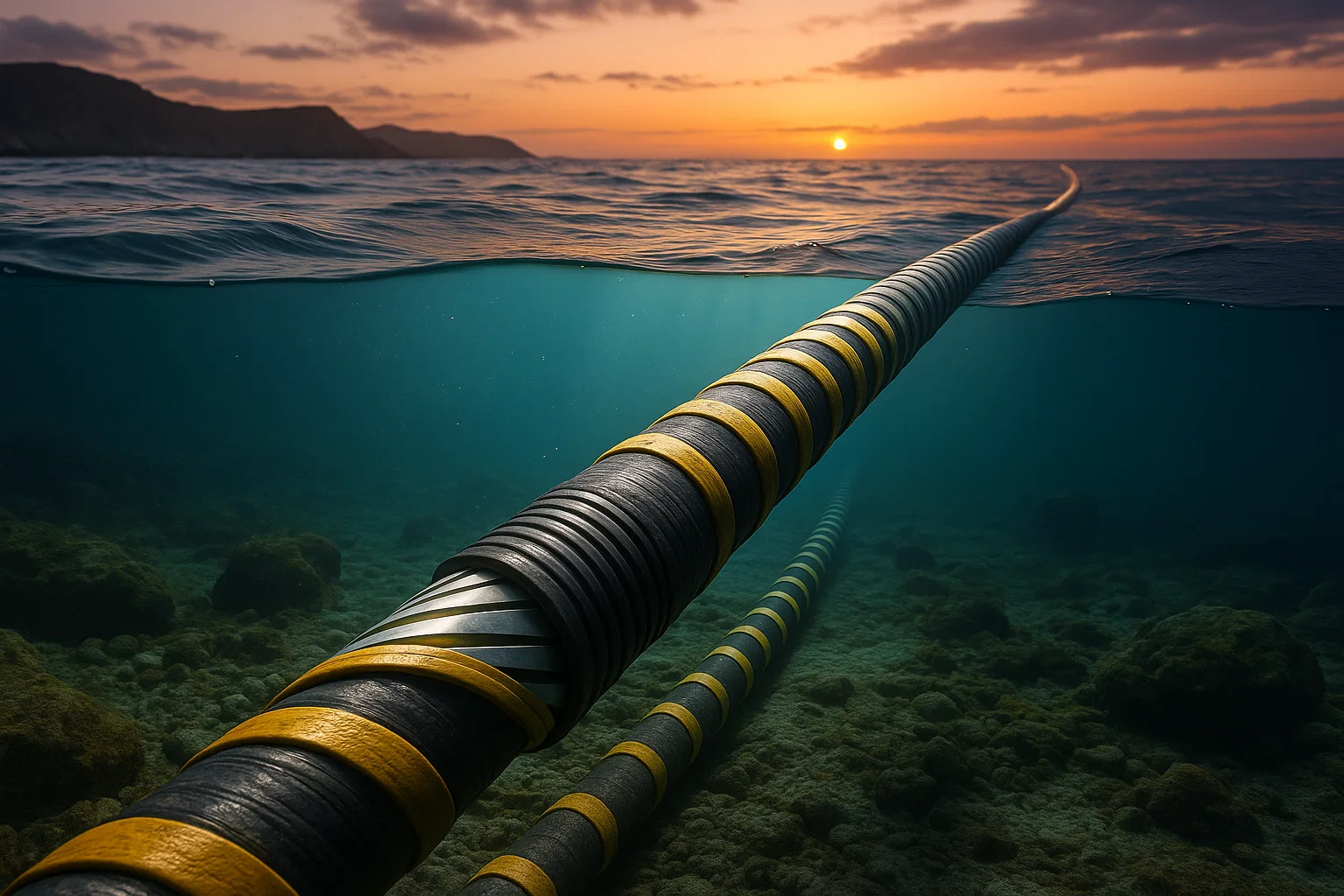The Unseen Backbone: Undersea Cables, Geopolitics, and the Race for Reliable Connectivity
A look at the fragile links that power the internet

The global internet relies on a vast network of undersea cables. This introduction explains why these hidden arteries are so critical and examines the geopolitical jockeying that surrounds their deployment and protection. Most of our online lives depend on thousands of miles of fiber-optic cables lying silently on the ocean floor. These undersea links carry more than 95 percent of international data, yet they’re surprisingly vulnerable to both natural and man-made threats.
1 A Web Beneath the Waves
Undersea cables crisscross the globe, connecting continents and enabling everything from video calls to financial transactions. They are typically the width of a garden hose and shielded by layers of steel wire and plastic. Despite these protections, earthquakes, ship anchors, and even hungry sharks have damaged them over the years.
2 Geopolitics and Control
Because cables are essential for communication, they’re also a strategic asset. Countries compete to route cables through their territories and often monitor data that flows across them. Recent political tensions have spurred interest in building redundant paths, ensuring that no single failure—or nation—can disrupt global connectivity.
3 Securing the Future
Satellite internet garners headlines, but undersea cables remain the backbone of the digital world. Protecting them involves international cooperation, improved monitoring, and rapid repair capabilities. As demand for bandwidth grows, so too will the race to lay new cables and guard existing ones. Our connected future depends on these unseen threads beneath the sea.
4 Historical Snapshot
The first transatlantic telegraph cable was laid in 1858, cutting message times between Europe and North America from weeks to minutes. Over the next century, telephone and data cables followed, each new generation carrying more capacity. Today’s fiber-optic lines are descendants of those pioneering efforts—and still vulnerable to the same geopolitical pressures.
5 Pros and Cons
Pros
- Provide high bandwidth and low latency compared to satellites
- Support global commerce and real-time communication
- Spur international collaboration on infrastructure projects
Cons
- Repairing breaks can take weeks and cost millions
- Routes often pass through contested waters, leading to diplomatic disputes
6 Best Practices
- Diversify cable routes to avoid single points of failure.
- Invest in monitoring systems to detect disruptions quickly.
- Coordinate with international partners on security measures and emergency response.
7 Conclusion
Though invisible to most users, undersea cables form the nervous system of the modern world. Understanding their history and vulnerabilities is key to keeping data flowing smoothly for decades to come.
8 Historical Background
The first transatlantic cables in the 19th century revolutionized global communication. Today’s fiber-optic lines descend directly from those early efforts. Companies and governments race to lay new routes to improve capacity and secure strategic advantages.
9 Pros and Cons
Undersea cables offer low latency and high bandwidth, making them essential for modern commerce. They are, however, expensive to deploy and susceptible to damage from natural disasters or human interference. Redundancy and rapid repair capabilities are crucial.
10 Actionable Measures
- Diversify routes to reduce single points of failure.
- Cooperate internationally on monitoring and maintenance.
- Invest in protective technologies like armored cabling and real-time fault detection.
11 Geopolitical Implications
Control over cable routes can provide countries with leverage over global data flows. Recent disputes highlight the importance of transparent agreements and international norms to prevent sabotage or espionage.
12 Conclusion
Though unseen by most users, undersea cables remain the backbone of the internet. Understanding their history and vulnerabilities is key to maintaining a resilient and open global network.
13 Looking Ahead
Demand for bandwidth shows no sign of slowing. New technologies, including lower-cost cable-laying ships and advanced fiber materials, promise to expand global networks further. Keeping these lines secure and operational will remain a top priority for governments and businesses alike.
14 Final Thoughts
Even in a world of satellites, the bulk of our data still travels along the ocean floor. Understanding the strategic importance of undersea cables helps safeguard the free flow of information that powers the modern economy.